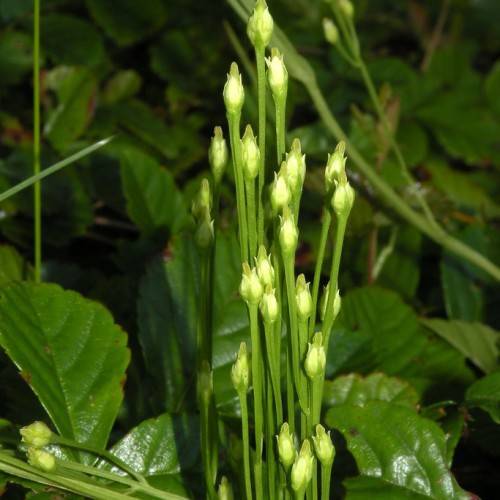
Yellow Screwstem
Bartonia virginica
Also Known As - Yellow BartoniaWatering:
Frequent
Hardiness Zone:
Flowers:
Flowers In Summer
Sun:
Sun, Partial Shade
Leaf:
Yes
Growth Rate:
Low
Drought Tolerant:
Yes
Salt Tolerant:
Yes
Care Level:
Medium
watering
Branched Bartonia prefers moist, sandy soils and should be watered approximately once a week during the active growing season, more often in prolonged periods without rain. It should not be overwatered, as too much moisture can cause the root system to rot. Water should only be applied when the top 2 inches (5 cm) of soil is dry. In cooler climates, the growing season usually begins in the spring and ends in the fall. In warmer climates, watering must be done all year to keep the soil somewhat moist.
sunlight
Branched Bartonia (Bartonia paniculata subsp. paniculata) performs best in full sun with a minimum of 6-8 hours of sun per day. This species thrives in direct sunlight for most of the day, from early morning until late afternoon. This particular species is also able to tolerate some shade in the day but when grown in shadier conditions, the bloom production may be reduced. Branched Bartonia may require more water if grown in a shadier area. Depending on the season, Branched Bartonia may require additional protection from hot sun in summer, especially in hotter areas. It is best to monitor the plant to look for signs of stress, such as wilting, and adjust sunlight accordingly.
pruning
Branched Bartonia (Bartonia paniculata subsp. paniculata) does not require a lot of pruning. Pruning should be done in late winter to early spring, before new growth begins. All dead and weak stems should be removed, and branch tips may be pruned to maintain a smaller size. Branched Bartonia does not require an extensive pruning, so it is important to be careful not to remove too much of the stems.
